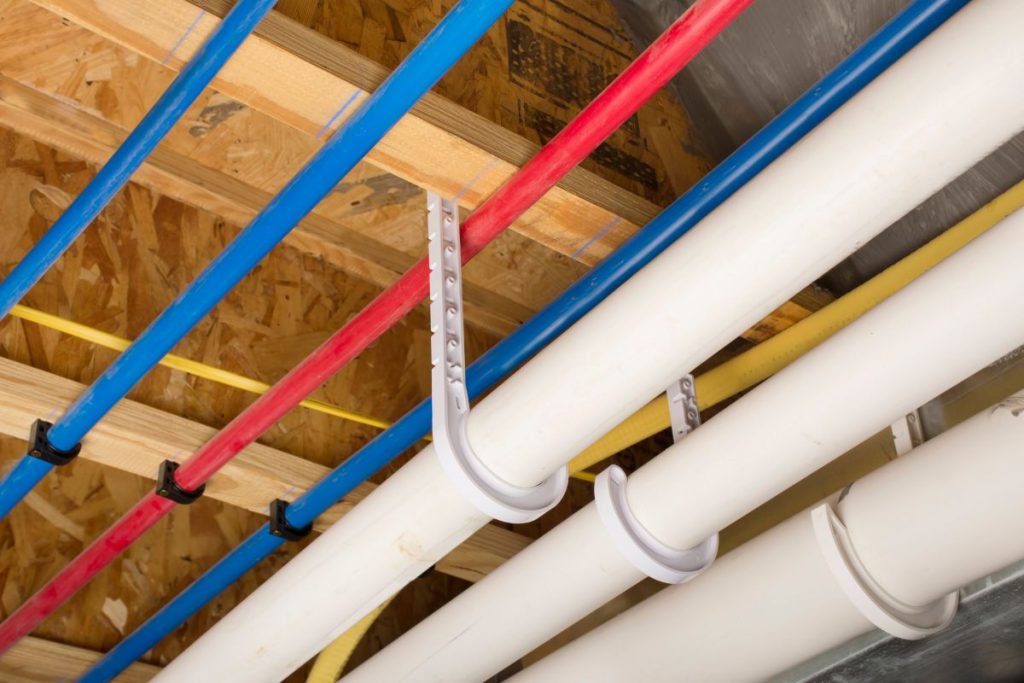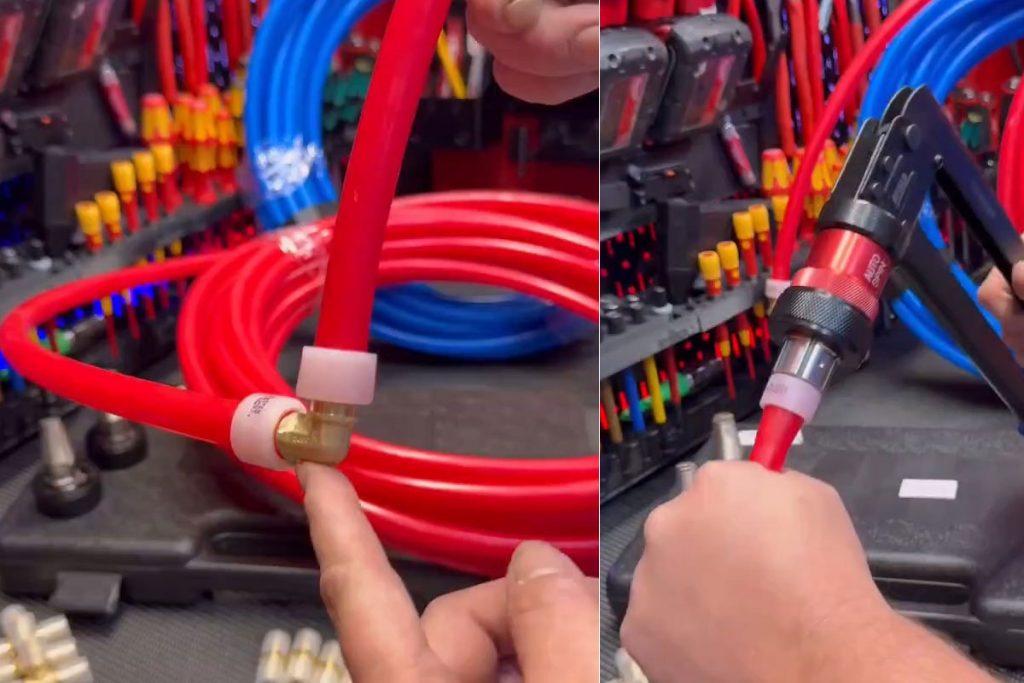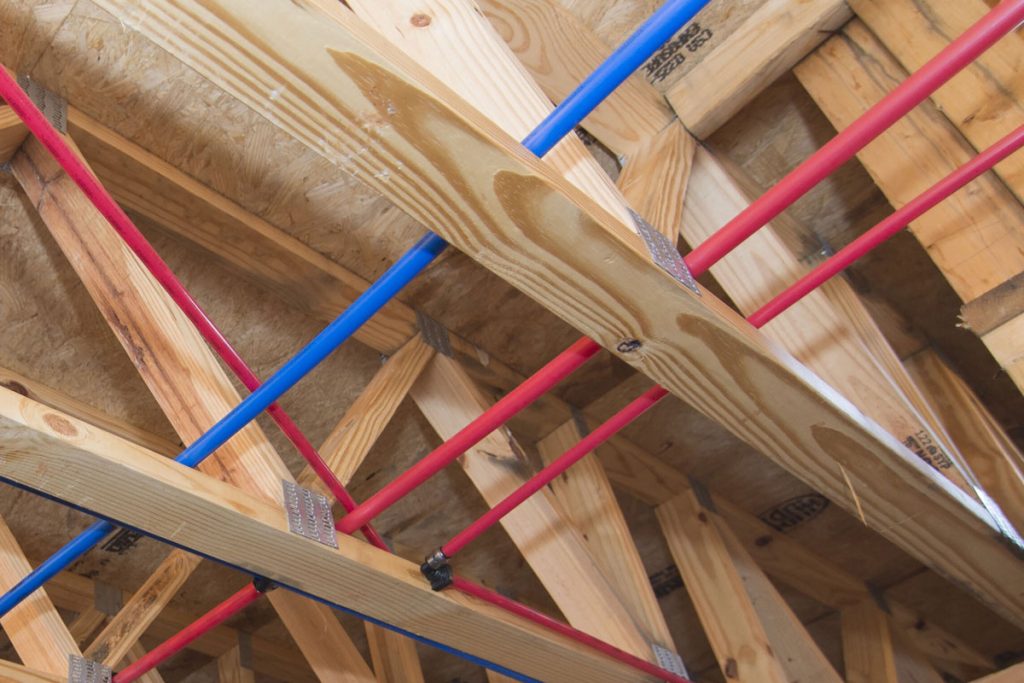Are you concerned that your PEX pipes might burst if the water inside them freezes? For homeowners living in a cold climate, it’s an unavoidable factor to consider. Like any type of pipe, PEX pipes freeze and burst eventually, but their superior flexibility has reduced the likelihood of them bursting.
Suppose you are considering installing a new plumbing system or renovating an old one. In that case, PEX pipe will provide a safer application for your project, especially in cold areas. Even though the frozen PEX pipes still can burst, which can lead to potential water damage, they are still the safest option for installations that could experience freezing temperatures.
This article will help you learn more about PEX pipes, especially how they perform under extreme weather. If you’ve already made up your mind, check out the PEX-A pipes and PEX-B pipes collections at PlumbingSell to get the best deal and high-quality products.
Table of Contents
Can PEX Pipes Freeze and Burst?
Although PEX pipes can tolerate cold weather better than traditional rigid pipes, such as copper and PVC, there are still chances for them to freeze and break. Thanks to their flexibility, PEX pipes can expand when the water inside them freezes, which helps reduce the risk of immediate cracking or bursting on frozen PEX pipes. This has also made them less likely to burst, even under extreme weather. PEX pipes will only crack in most cases.
Many homeowners may wonder, “Does PEX pipe freeze?” and the answer is yes. The likelihood increases if the pipes are insulated, exposed to freezing air in places like attics or crawl spaces, or if the water inside the pipe remains solid. Once the PEX pipe freezes, it will start to lose its flexibility when it repeatedly freezes and thaws. This will eventually lead the pipes to crack.
Among different types of PEX pipes, PEX-A pipes have a higher degree of flexibility and better freeze resistance. They can expand more before cracking, making them more suitable for cold climates. On the other hand, PEX-B pipes are more rigid and may not be capable of withstanding freezing stress, which could end up with easier bursting. So, suppose you are installing plumbing applications in an area exposed to winter temperatures or considering using PEX pipes outside. In that case, PEX-A is usually the better choice.
Signs Your PEX Pipe Freezes
It’s easy to tell when traditional pipes are frozen because they tend to burst very quickly. However, as PEX pipes are a type of plastic pipe, they are harder to notice when covered with ice. Not to mention, these pipes rarely burst in freezing temperatures, which has made the signs of frozen PEX pipes difficult to find.
Poor Water Flow
When a PEX pipe freezes, the first significant warning sign is usually a sudden loss of water flow. Under cold climate situations, if you turn on a valve and only a bit of water comes out, it’s a strong indication that somewhere along the line, water has frozen and blocked the pipe. If you don’t defrost the water quickly, this can cause the pipes to crack or burst. This is especially common in areas with poor insulation like crawl spaces, attics or exterior walls.
Frost or Condensation
Another major sign of a freezing pipe is frost or condensation forming on the outside of the pipe. If you can visually inspect the pipe and see that it’s covered in a layer of frost, there’s a high chance it’s frozen inside. Although PEX pipes are more flexible than copper or PVC pipes and can expand, there are still chances for them to experience cracks and bursts. So it is important to keep an eye on the PEX pipes in your place during the cold season and stock up on some extra EFIELD PEX pipes in case emergencies happen.
How Long Can PEX Pipes Freeze Before They Crack or Burst?
While PEX pipes are known for their extreme burst and freeze resistance, they are not completely immune to cold-weather damage. The amount of time a PEX pipe can stay frozen before bursting depends on several factors, including pipe diameter, water pressure, exposure level and ambient temperature.
In general, the temperature cutoff for PEX pipes is around -7°C. They can usually handle water freezing temperatures around 0°C, but once it gets colder than that, the PEX material is no longer capable of insulating the water inside. If a PEX pipe remains frozen without insulation, the risk of rupture increases remarkably. The expansion of pipes caused by freezing water can lead to a crack or a full-on burst once the ice starts to thaw.
For homeowners in extreme cold weather areas, we always recommend using PEX-A pipes if possible. They are more flexible and tend to handle expansion and contraction better than the other types of PEX pipes. Learn more about the difference between PEX-A vs PEX-B pipes here. Except for the factors mentioned above, the location of the pipe also makes a difference. For instance, PEX pipes installed in a crawl space that isn’t insulated are way more likely to freeze and burst than PEX pipes located inside conditioned spaces.
Key takeaway: Even though PEX pipes are durable, prolonged exposure to freezing temperatures is still a risk. Different factors need to be considered when installing the PEX pipes.
How to Prevent Frozen PEX Pipes
Even though PEX pipes are more flexible and freeze-resistant than other types of pipes, there are still chances for them to freeze and burst in cold temperatures. The key to avoiding a plumbing emergency and extending the lifespan of any PEX pipes is prevention.
Insulate PEX pipes
Proper insulation is one of the most effective ways to prevent freezing PEX pipes. This is one of the easiest ways to protect pipes in unheated exposed areas like crawl spaces, basements, attics, and exterior walls. You can use foam insulation sleeves or tape to wrap the pipes to keep the water inside PEX pipes from freezing.
Keep Water Moving
Moving water is less likely to freeze, so during cold weather, you should let water flow in the PEX pipes. For example, let faucets drip slowly to keep water flowing. This can also help relieve pressure in the pipes and prevent them from bursting. Even a slow trickle of water can prevent a frozen blockage inside your water appliances.
Choose the Right Type of PEX
Not all PEX pipes are created under the same process. If you are installing new plumbing or replacing old pipes, think about their performance under cold weather. PEX-A pipes have superior flexibility and are more freeze-resistant compared to PEX-B pipes. Also, they are capable of expanding and returning to their original shape, making them ideal for cold climates.
Conclusion
Understanding how frozen PEX pipes behave and how to detect if they’ve burst is important for homeowners living in cold climates. While PEX pipes are generally safer than traditional materials, they are still vulnerable to prolonged exposure to freezing temperatures. Whether you are dealing with a frozen PEX pipe or trying to prevent PEX pipe freezing, it’s essential to know the signs of PEX pipe freezing and bursting to take proactive steps to protect your plumbing applications.
If you are planning plumbing projects or preparing for colder weather, explore EFIELD PEX-A and PEX-B pipes at PlumbingSell. We offer durable, high-quality options designed to withstand the harshest weather conditions.



